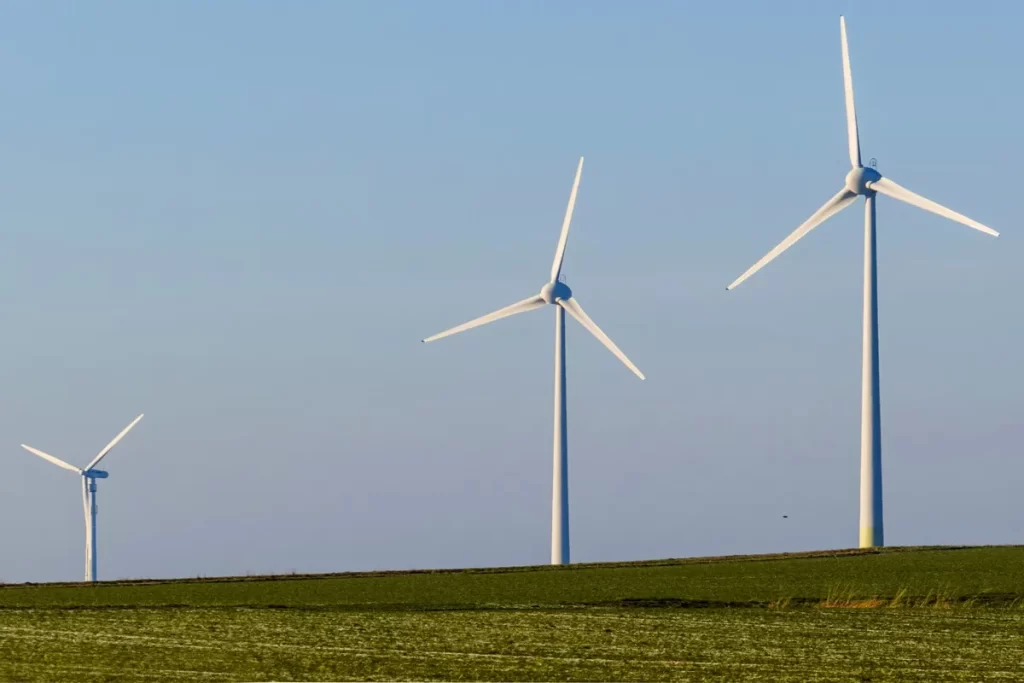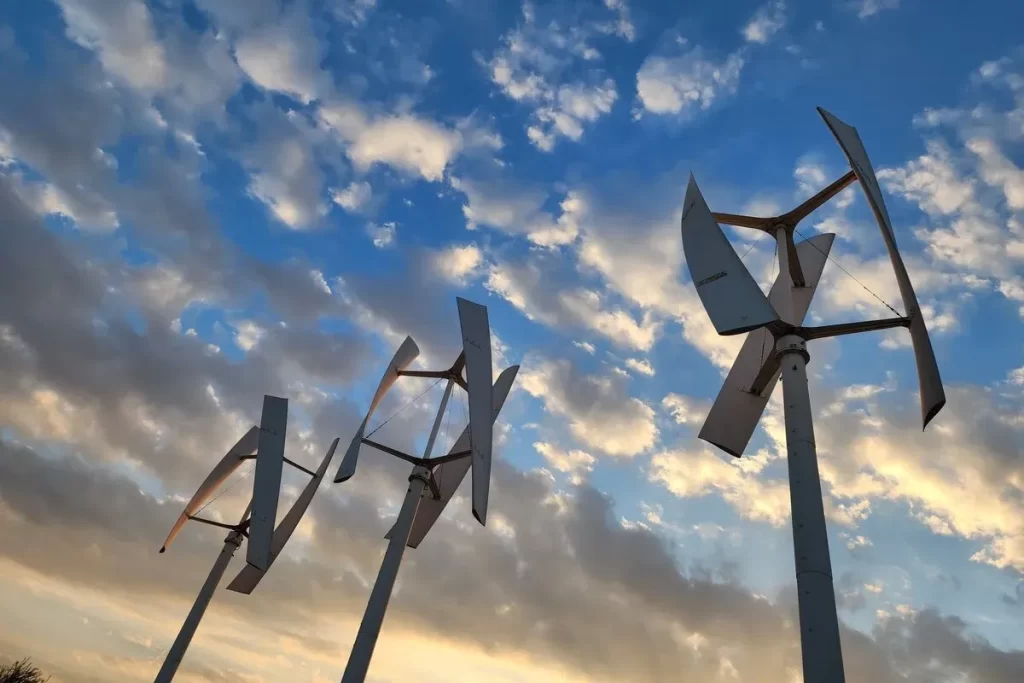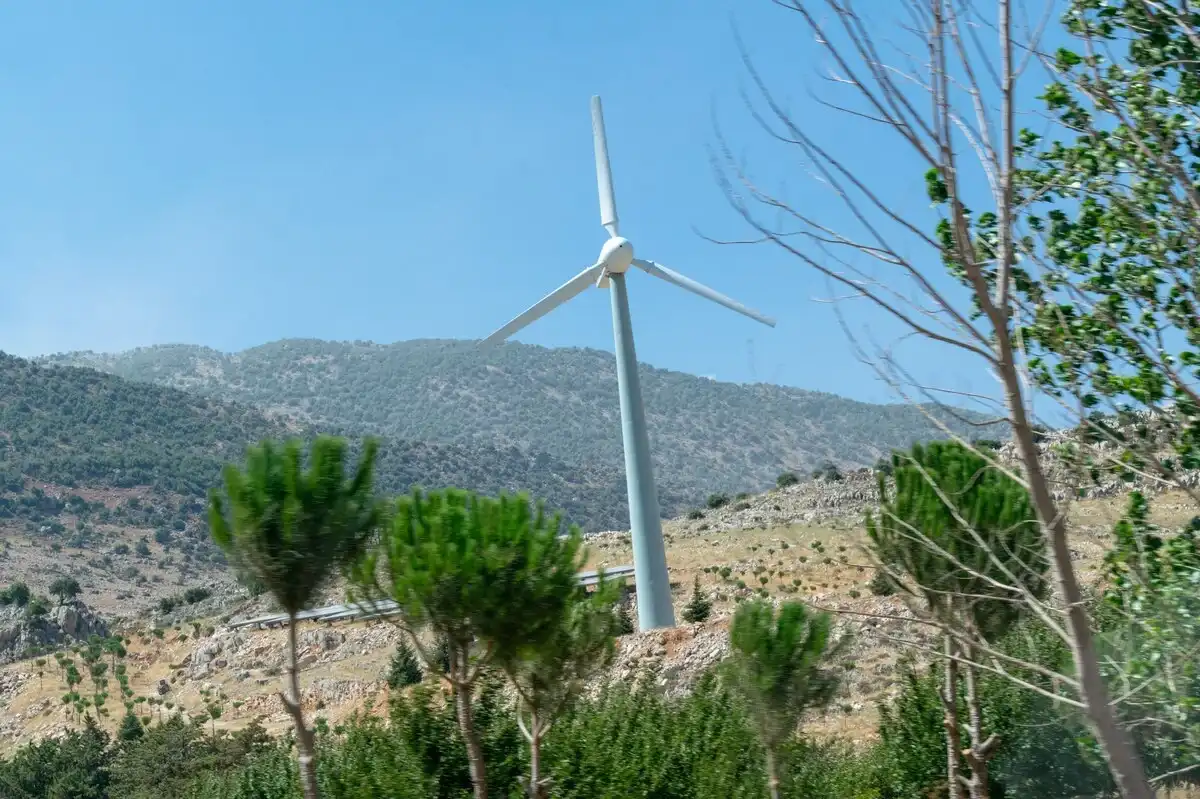Wind energy has gained popularity in recent years, playing a crucial role in the global transition toward renewable energy sources. As wind turbines become more common, you might wonder about the different types of wind turbines available and how they work. This blog post will explore various wind turbine designs, their applications, and their unique characteristics.
Horizontal Axis Wind Turbines (HAWT)
Horizontal axis wind turbines (HAWT) are the most common type of wind turbine used today. These turbines have a main rotor shaft and blades positioned horizontally, parallel to the ground.
Upwind vs. Downwind Turbines
There are two primary configurations for HAWT: upwind and downwind. Upwind turbines have their rotor facing into the wind, while downwind turbines have their rotor on the opposite side, facing away from the wind. Upwind turbines are more prevalent, as they tend to be more efficient and stable.
Blade Materials and Design
Modern HAWT blades are typically made of lightweight composite materials, such as fiberglass or carbon fiber, to minimize weight while maintaining strength. The aerodynamic design of the blades is essential to maximizing energy capture and reducing noise.

Common HAWT Applications
HAWTs are used in a variety of settings, from large-scale wind farms to smaller installations for homes, businesses, and remote areas. Due to their efficiency and versatility, HAWTs are often the go-to choice for many wind energy projects.
Vertical Axis Wind Turbines (VAWT)
Vertical axis wind turbines (VAWT) have their main rotor shaft arranged vertically, perpendicular to the ground. There are two primary types of VAWT: Darrieus and Savonius turbines.
Darrieus Wind Turbines
Darrieus turbines, also known as “eggbeater” turbines, have two or more curved blades attached to a central vertical axis. They are efficient and can capture wind from any direction, but they tend to have a lower starting torque, requiring an initial push to start turning.
Savonius Wind Turbines
Savonius turbines are drag-based VAWTs that use a simple design with two or more scoops or cups connected to a vertical axis. While they have a lower efficiency compared to other turbine types, their simple design and ability to capture wind from any direction make them suitable for small-scale applications and low-wind environments.
Advantages and Disadvantages of VAWT
VAWTs can capture wind from any direction without needing to reorient and can be placed closer to the ground, reducing installation and maintenance costs. However, they are generally less efficient than HAWTs and are more prone to wear and tear due to the varying forces on the rotor.

Small Wind Turbines for Residential Use
Small wind turbines are designed for residential and small-scale applications, typically generating between 100 watts and 100 kilowatts of power.
Types of Small Wind Turbines
Both HAWTs and VAWTs are available in smaller sizes suitable for residential use. The choice depends on factors such as wind conditions, available space, and aesthetics.
Installation and Maintenance
Installing a small wind turbine typically involves assessing the site’s wind resources, obtaining necessary permits, and selecting a suitable turbine and tower. Professional installation is recommended to ensure optimal performance and safety. Regular maintenance, such as inspections and lubrication, is necessary to keep the turbine in good working order.
Cost and Return on Investment
While the initial cost of a small wind turbine can be significant, the long-term savings on energy bills and potential incentives or tax credits can help offset the investment. The payback period varies depending on factors such as wind resources, electricity rates, and installation costs.
Offshore Wind Turbines
Offshore wind turbines are installed in bodies of water, taking advantage of the stronger, more consistent winds typically found offshore.
Fixed-Bottom Turbines
Fixed-bottom offshore wind turbines are mounted on structures that are attached to the seabed. This type of turbine is most common in shallow and transitional water depths. Various foundation designs are used, including monopiles, gravity-based structures, and jacket structures.
Floating Turbines
Floating wind turbines are not fixed to the seabed and are instead anchored to the ocean floor with mooring systems. This technology allows wind energy development in deeper waters, where fixed-bottom turbines are not feasible. Floating turbines are still an emerging technology, but they hold great potential for the future of offshore wind energy.
Challenges and Opportunities in Offshore Wind Power
Offshore wind energy faces several challenges, including higher installation and maintenance costs, potential impacts on marine life, and logistical complexities. However, the advantages of stronger and more consistent winds and the potential for reduced visual and noise impacts make offshore wind an important and growing sector of the renewable energy industry.
Conclusion: Choosing the Right Turbine for Your Needs
Understanding the different types of wind turbines and their applications is essential when considering a wind energy project. Whether it’s a large-scale wind farm, a small residential turbine, or an innovative offshore installation, each type of wind turbine offers unique advantages and challenges. By carefully considering factors such as wind resources, available space, and budget, you can select the right wind turbine to meet your renewable energy goals.
Frequently Asked Questions
Are Wind Turbines Cheaper than Solar Panels?
Can Wind Turbines be Used for Homes?

